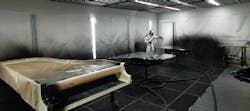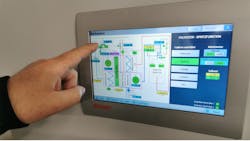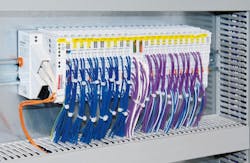Bösendorfer Applies PC-based Control
Process logistics in the Berkmann varnishing facility at Bösendorfer now operate based on a new concept in which the equipment control center—which includes the ventilation units, filter system, heat recovery system, and heat generator—has been installed in a separate building.
Thomas Broukal, technical and manufacturing director at the Bösendorfer piano factory, said the workflow optimization has had a positive effect on the surface quality of the varnish. “We have significantly fewer rejects in production and the quality has been improved another notch due to less contamination,” he says.
Controlling the temperature, speed, and volume of the supply air or exhaust air in the varnishing booth requires exceptional precision to create a high-quality coat of varnish. The central control system for the varnishing plant consists of the C6015 ultra-compact industrial PC, using EtherCAT as the communication system, along with analog and digital EtherCAT terminals, and a TwinCAT 3 PLC. The Beckhoff TwinCAT HMI visualization software is used on a CP690x economy built-in control panel.
Energy efficient
Significant energy savings have been achieved through intelligent temperature control in the varnishing area using the TwinCAT Controller Toolbox, the use of well water for cooling, and heat recovery from the varnishing area’s exhaust air.
Once the air in the facility has been preconditioned using these methods, all that remains is to bring the room temperature to the level required for the varnishing process.
“With heat recovery, we not only save 75% of the costs associated with heating, but we also reduce carbon emissions by 75%,” explains Broukal. “We’re talking about 70,000 m? of air per hour that needs to be heated—that means savings amounting to several hundred kilowatt-hours of energy per hour.”
Open, modular control
Separating the equipment control center from the varnishing hall left 60 meters between the control cabinets. Instead of using complex thermocouple cables to bridge this gap, fiber optics with EtherCAT were used as the communication protocol.
The plant is operated using the CP690x control panel outside the varnishing booth. Visualization capabilities were implemented using Beckhoff’s web-based TwinCAT HMI operating software, which makes it possible to access the plant’s operating functions from any PC via a web browser on the company’s network.
Varnish applicators can select from pre-installed functions in the Beckhoff control system panel, which includes lighting options on the plant floor. Alarms and trend recording have also been integrated to aid in optimizing maintenance on the varnishing plant.



